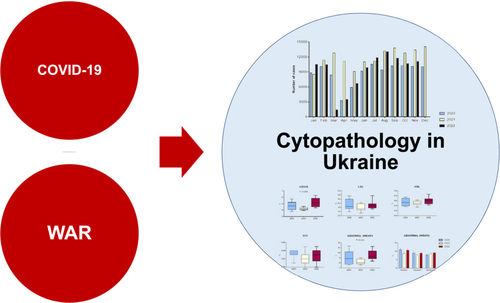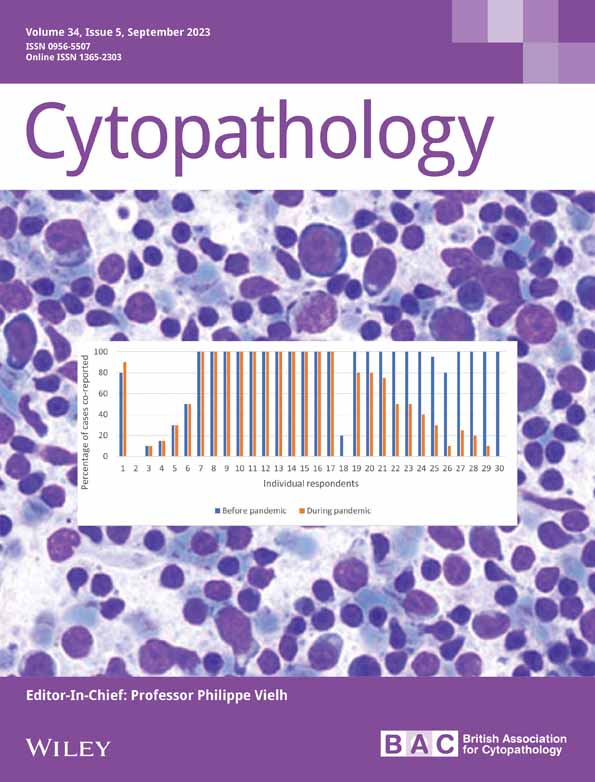The detrimental consequences of two consecutive disasters impacting cytopathology in Ukraine: COVID followed by the war
Abstract
The Covid-19 pandemic and ongoing war in Ukraine caused unprecedented disruption in healthcare, including cytopathology activities. This paper elucidates the effect of two consecutive disasters—the COVID-19 pandemic followed by the war—on cytopathology practice in Ukraine through a single-centre retrospective study. Total testing volumes, geographic distribution, and indicators of laboratory operations were assessed during three periods of 3 months each: the first 3 months of the acute phase of the war (March-May 2022, period 1); summer (June-August 2022, period 2); and the fall (September-November 2022, period 3, associated with massive attacks on the energy infrastructure in Ukraine). These data were compared with the corresponding periods in 2020, during the COVID-19 pandemic, and in 2021, the post-lockdown period. The ongoing war in Ukraine has caused a dramatic disruption in routine health maintenance and cytological practice. A net decline in both PAP testing and non-gynaecological pathology was associated with a geographic redistribution of cytopathological testing, and an increase in the rate of abnormal sample reporting. Despite these challenges, cytopathology practice in Ukraine demonstrates resilience, allowing for maintaining the healthcare system and addressing the needs of the civil population during the war. The ongoing war in Ukraine heavily affected cytological practice. The decline in PAP testing during the early period of the war was associated with an increase in the abnormal sample rate. Further study of the war's impact on the cervical pathology rate and the health of the population in the next decades is needed.
Graphical Abstract
This paper elucidates the effect of two consecutive disasters—the COVID-19 pandemic followed by the war—on cytopathology practice in Ukraine. The impact of war on the numbers and geographic distribution of samples, on workload and laboratory performance indicators, as well as the rate of abnormal cytological samples are discussed.
CONFLICT OF INTEREST STATEMENT
The authors declare there are no potential conflicts of interest with respect to the research, authorship, and/or publication of this article.
Open Research
DATA AVAILABILITY STATEMENT
The datasets generated during and/or analysed during the current study are available from the corresponding author on reasonable request.





